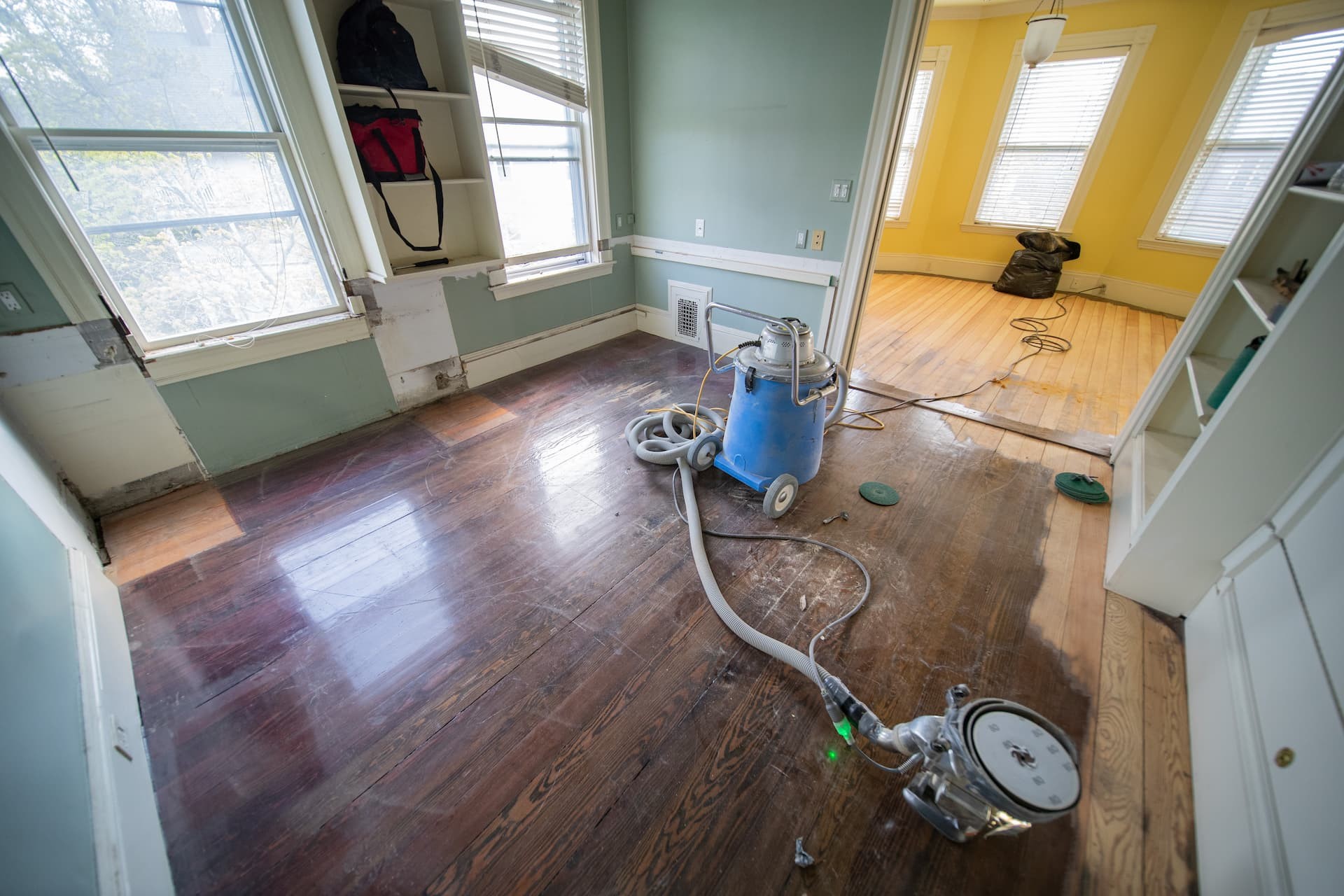Choosing the appropriate finish for your hardwood floors is critical to both look and endurance. Weles Wood Floor Services understands this value and is dedicated to assisting you through the process. In this post, we'll look at the ins and outs of utilizing polyurethane, a common finish for hardwood floors. You'll learn about several types of polyurethane, application procedures, and maintenance suggestions to keep your floors looking beautiful and lasting longer. In addition to its durability and aesthetic appeal, the right polyurethane finish can significantly enhance the protection and longevity of your hardwood floors.
Understanding Polyurethane Finishes
What Is Polyurethane?
Polyurethane is a synthetic resin that is often used for treating hardwood floor. It provides a protective coating that resists dampness, scratches, and normal wear, increasing the wood floor's endurance. Furthermore, polyurethane enhances the inherent beauty of the wood by keeping its color and grain patterns. Additionally, polyurethane can be applied as a gloss finish, offering an extra level of sheen that further accentuates the wood's natural elegance and texture.
Types of Polyurethane Finishes
There are two main types of polyurethane finishes: oil based and water based finish. Each type has its unique characteristics and ideal use cases. Here's a comparative table to help you choose the right type of polyurethane for your hardwood floor:
| Feature | Oil-Based Polyurethane | Water-Based Polyurethane |
|---|---|---|
| Finish Appearance | Rich, amber glow enhancing wood's natural colors | Retains wood's natural color, no added tint |
| Durability | Extremely durable, ideal for high-traffic areas | Adequate protection, suitable for moderate traffic |
| Drying Time | Longer drying time | Dries faster |
| Odor | Emits a strong odor during application | Lower odor, more user-friendly |
| Cleaning | Requires solvents such as mineral spirits | Easy cleanup with soap and water |
| Environmental Impact | Higher VOCs (Volatile Organic Compounds) | Lower VOCs, more environmentally friendly |
| Ideal Use Cases | Best for busy areas like hallways and commercial spaces | Good for residential spaces and quick turnaround projects |
Applying Polyurethane to Hardwood Floors
Step-by-Step Application Guide
Applying polyurethane correctly is crucial for achieving a smooth, durable finish. Here's how to do it for both oil-based and water based polyurethane varieties:
- Mix the Polyurethane: Gently mix the polyurethane using a stirring stick. Avoid shaking to avoid bubbles.
- Cut In the Edges: Begin by applying polyurethane along the room's borders using a brush. This is referred to as "cutting in.”
- Apply the First Coat: For bigger areas, apply with a lambswool or synthetic applicator pad connected to a pole. Dip the applicator in the polyurethane and apply thin, uniform coats following the grain of the wood. To avoid drips and uneven coverage, do not apply too much product.
- Let It Dry: Allow the first coat to dry according to the manufacturer's instructions
- Sand Between Coats: Once the first coat is dry, lightly sand the surface with fine-grit sandpaper (220-grit) to ensure a smooth base for the next coat. Vacuum and wipe with a tack cloth to remove dust.
- Apply Subsequent Coats: After the first coat has dried, lightly sand the surface using fine-grit sandpaper (220-grit) to provide a smooth basis for the next coat. To eliminate dust, vacuum and clean it with a tack cloth.
Number of Coats and Drying Time
The amount of coatings and drying periods might vary depending on the polyurethane and ambient circumstances.
- Oil-Based Polyurethane: Typically takes 2-3 applications. Each coat can dry in 24 hours, with complete curing taking up to a week.
- Water-Based Polyurethane: Typically requires 3-4 applications. Each coat dries in 2-4 hours, with full cure time of 72 hours.
Always follow the manufacturer's directions for the individual product you're using for your wood floor finish, as drying timeframes might vary. Ensure enough airflow throughout the drying process for both safety and optimal curing of the wood floor finish.
Safety Considerations
Health and Safety Tips
Applying polyurethane necessitates close attention to health and safety. Follow these rules for a safe application process:
- Ventilation: Ensure that the room is well-ventilated. Open windows and use fans to circulate air and remove odors, especially when using oil based polyurethane.
- Protective Gear: Wear adequate protective equipment, such as a respirator mask, safety goggles, and gloves. This is necessary to avoid breathing fumes and to protect your skin and eyes from polyurethane.
- Avoid Fire Hazards: Polyurethane is flammable. Keep it away from open flames and avoid smoking in the area where it is applied.
- Safe Storage: Store polyurethane in a cool, dry location away from children and pets. Make sure the lid is properly secured to avoid spills and fume leaks.
Environmental Considerations
Polyurethane's environmental impact should not be underestimated. Considerations for ecologically responsible use:
- Use Low VOC Products: To decrease environmental effect and enhance indoor air quality, use polyurethane materials that contain minimal volatile organic compounds (VOCs).
- Proper Disposal: Do not flush leftover polyurethane down the drain or into the environment. Check with your local waste management authority for guidance on how to dispose of polyurethane and similar items.
- Clean Responsibly: Use eco-friendly cleaning products for water-based polyurethane. For oil-based polyurethane, dispose of mineral spirits or other cleaning solutions properly.
By following these safety and environmental guidelines, you may assure a safe and responsible polyurethane application procedure.
Conclusion
Finally, selecting a polyurethane finish for your hardwood floor is a practical and aesthetically pleasing choice. A polyurethane floor finish not only improves the natural beauty of your wood, but it also provides a durable layer of protection. Whether you choose an oil-based or water-based polyurethane finish, the end result is a floor finish that will withstand daily wear and tear while maintaining the beauty of your hardwood floor.
The installation of a polyurethane floor finish necessitates careful attention to detail and strict respect to safety rules, but the work is well worthwhile. By choosing the right polyurethane finish and using proper application procedures, you can ensure that your hardwood floor stays a focal point of your home's décor for years to come. A polyurethane floor finish is an excellent alternative for individuals looking for a long-lasting and aesthetically pleasing wood floor surface.



